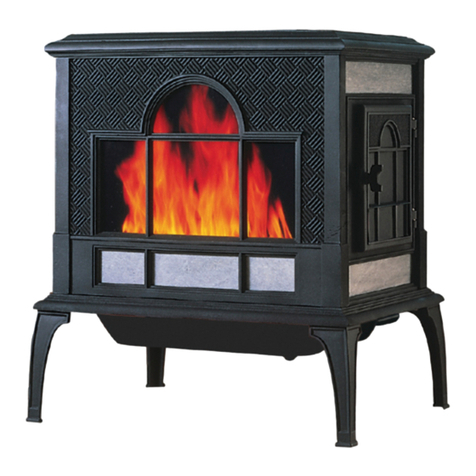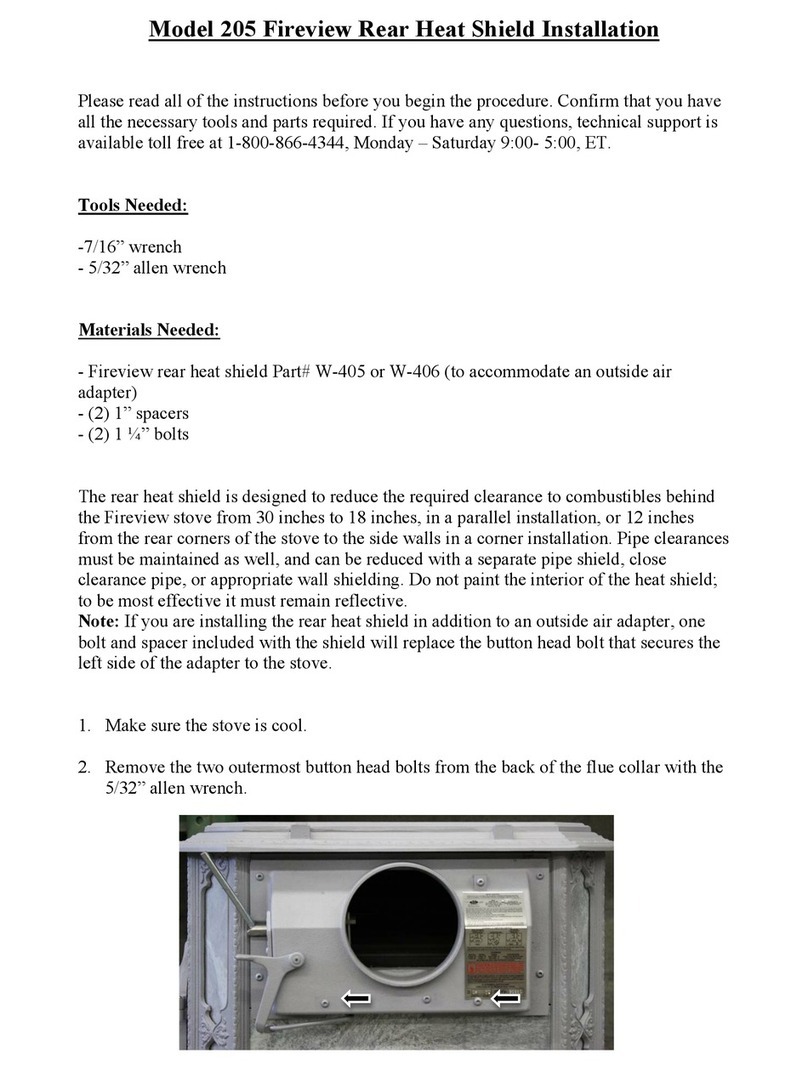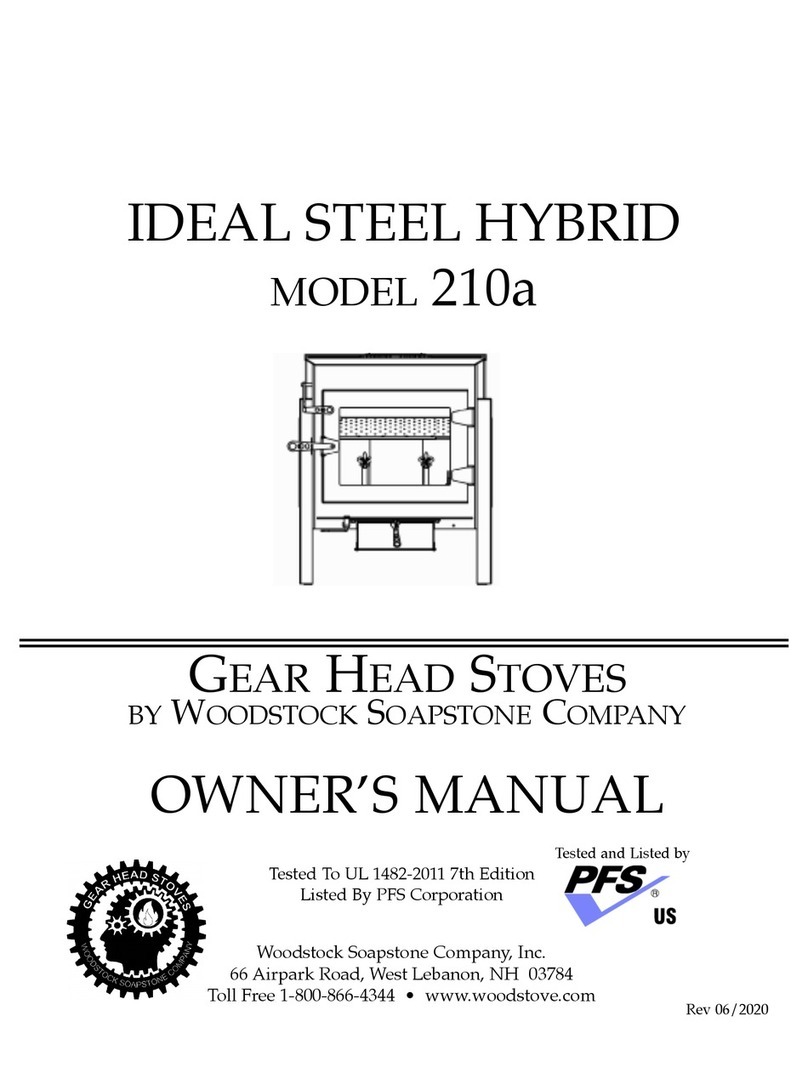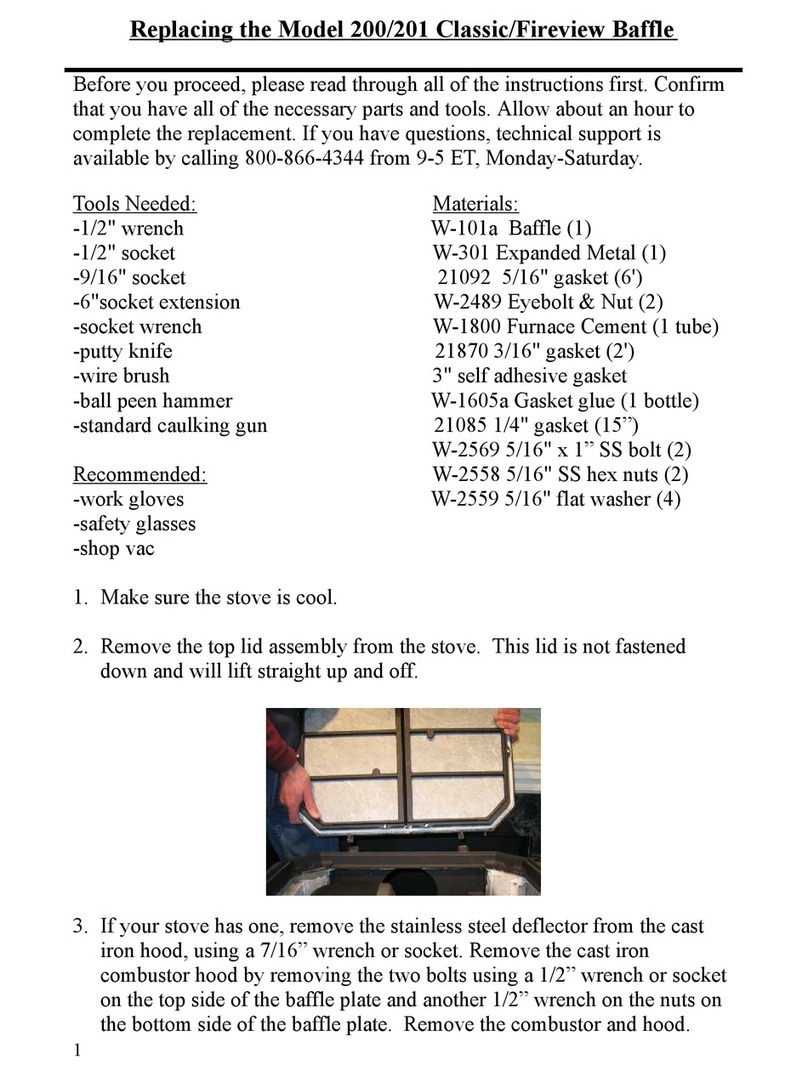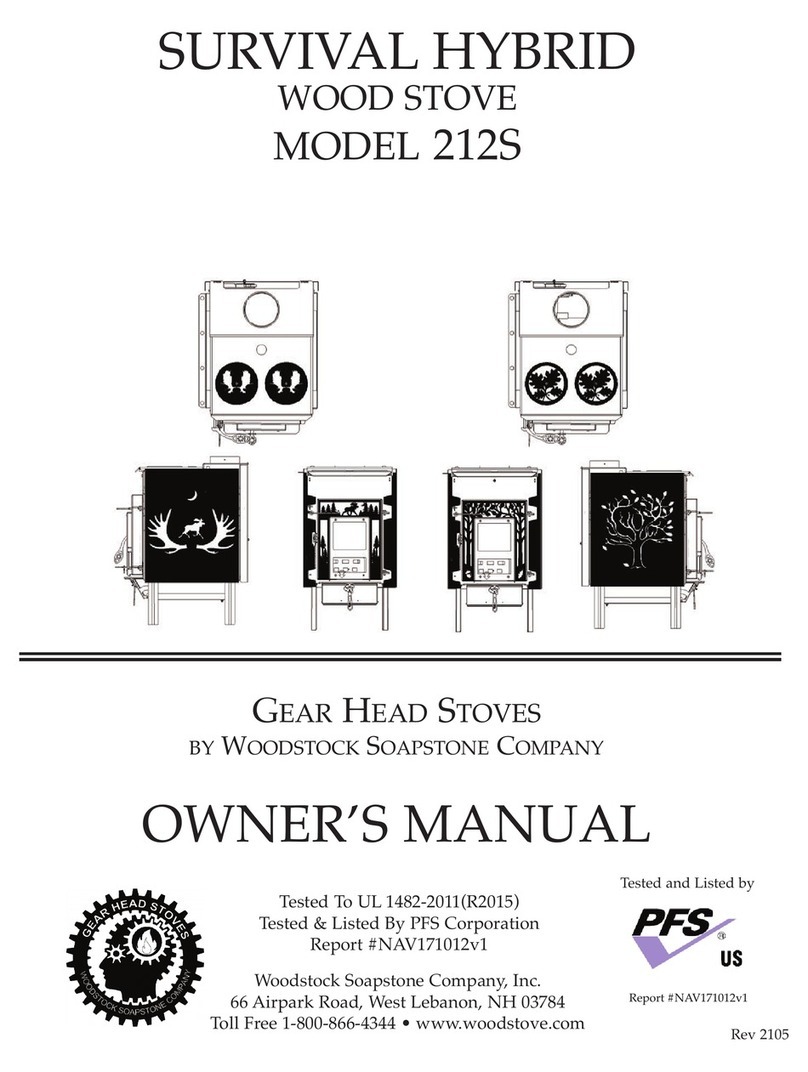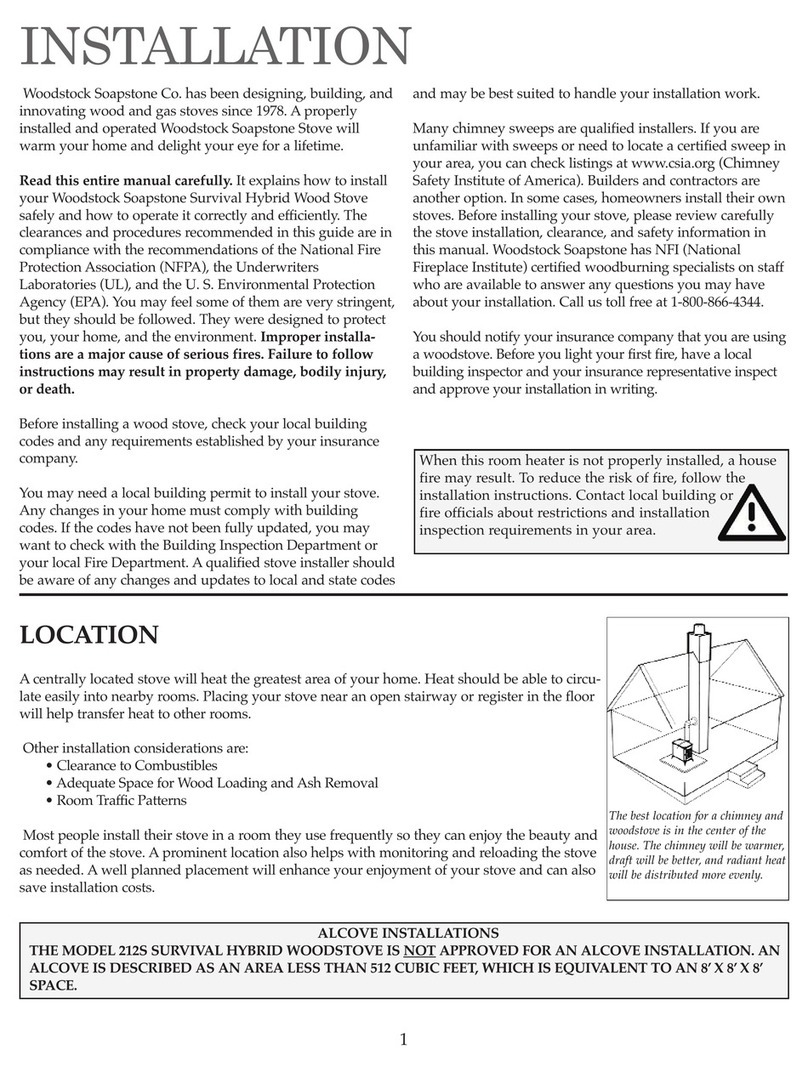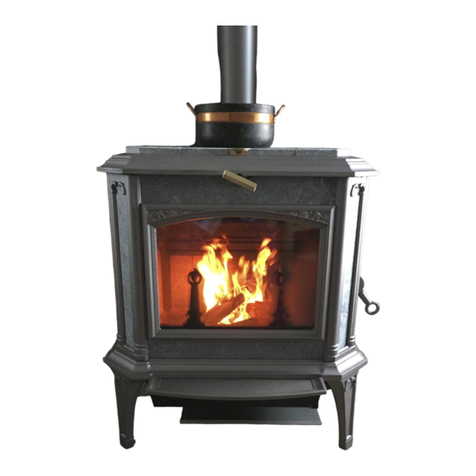
3) Add small splits of firewood once the kindling has ignited. This will establish a bed of hot coals.
4) Add small to medium splits onto the hot coals. Assuming the wood is dry, the fire should spread through the
wood. After about 10 minutes, close the air damper down about half way between the “2” and “3” mark.
5)After the stove top temperature reaches 250°F or your single wall pipe temperature reaches 300-350°F, close the
bypass by lifting the lever with the black knob all the way up into the closed position. It will stop when the
bypass is fully closed. All of the smoke from the firebox will now pass through the catalytic combustor. The
combustor will generate a substantial amount of heat as it “burns” the smoke passing through it.
6) Adjust the air control damper to a lower setting, our recommendation is near the “1” mark. The closer the lever
is to the “0”, the lower the burn rate, as less air is entering the firebox. The final damper setting will be
determined by the desired heat output from the stove, the condition of the wood being burned, and the draft
through the chimney system.
NOTE: The above procedures, times, and positions are a guide. Your conditions will vary depending upon draft, wood
moisture and size, and weather conditions.
Engaging the Catalytic Combustor
The catalytic combustor will start to burn the gases and particles in the smoke when the
temperature of the smoke reaches approximately 500ºF (internally), or after about 10-15
minutes of establishing a strong fire. Each stove comes with a magnetic surface thermometer
and a probe thermometer to monitor your stove temperatures. The magnetic surface
thermometer will read approximately 1/2 the temperature inside the stove, so when the
surface thermometer on the stove top reads 250ºF, it is 500ºF inside. You will find that after
the combustor is engaged, surface temperatures will often rise considerably- evidence that
the combustor is producing lots of heat, and the pipe temperature will go down, indicating
less heat loss to your chimney!
The probe thermometer terminates within an inch of the catalytic combustor, and will
provide the temperature of gasses exiting the catalytic combustor. Temperatures above 500
degrees F indicate that the catalyst is working.
Engage the combustor by lifting the bypass handle (with the black knob) up until it clicks
into its upright position and then reduce the air damper to 1. You should see the bright
yellow flames slow down and become more orange in color. ake fine adjustments to your
damper (by moving it closer to 0 in 1/8 to 1/4 inch increments) until you achieve this slower
moving, darker flame. Closing the air damper all the way will provide a long, overnight
burn.
Low & Overnight Burning
These instructions are intended as a guide to operating your wood stove. Your timing and final damper settings will
vary depending on chimney draft, type of wood, moisture content of the wood, and size of the splits. The Fireview
model is simply designed and intended to be user friendly, but it will take some practice to get used to it.
1) Before you open the loading door, you must fully open the catalytic bypass and the air damper. Wait a minute or
so for a strong draft to be established to prevent smoke from spilling back into the room.
2) Stir up the hot coals. If necessary, excess ash should be removed before reloading the firebox. Dispose of the
ash properly. Never put an ash container on a combustible surface, like a wood floor.
3) Place several small splits on top of the hot coals and allow them to ignite.
4) Load the firebox to capacity, leaving space for secondary combustion, with a mix of larger and smaller splits.
Close the loading door and allow the pipe temperature to come back up to 300°-350°.
The amoun of combus ion air
available in he firebox is con rolled
by he air con rol lever.
When he combus or lever is up,
he combus or is in he “engaged”
posi ion. When he handle is down,
he combus or is “bypassed”.
13
CAUTION
NEVER U E GA OLINE, LANTERN FUEL, KERO ENE, CHARCOAL LIGHTER FLUID, OR IMILAR LIQ-
UID , TO TART OR ‘FRE HEN UP’ A FIRE IN THI TOVE. KEEP ALL UCH LIQUID WELL AWAY
FROM THE TOVE WHILE IT I IN U E.
